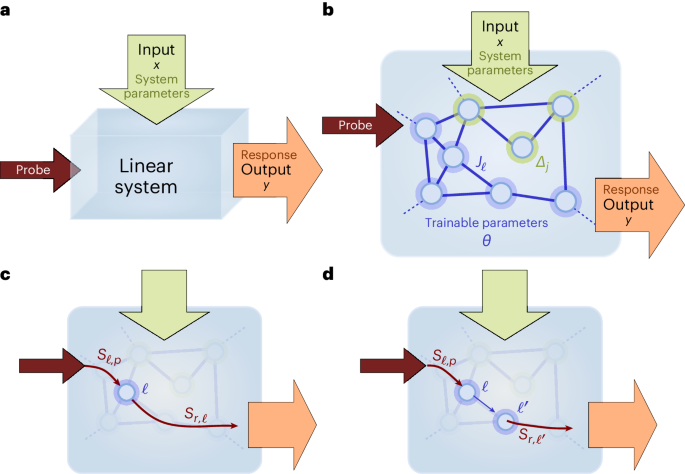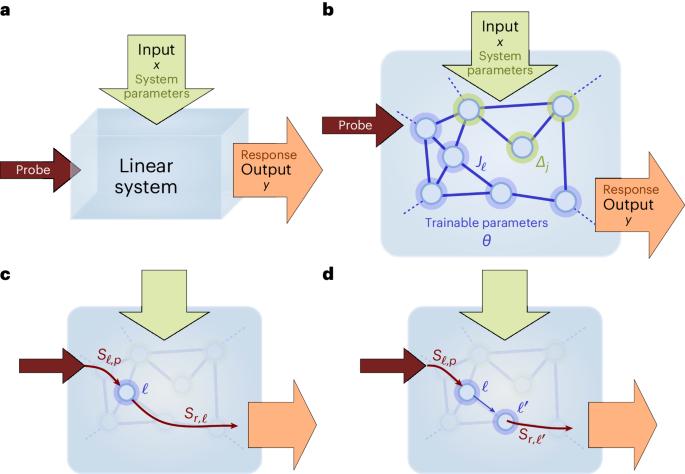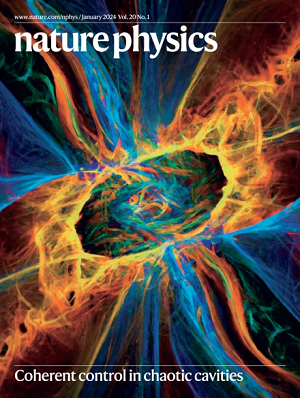利用线性波散射的完全非线性神经形态计算
IF 17.6
1区 物理与天体物理
Q1 PHYSICS, MULTIDISCIPLINARY
引用次数: 0
摘要
用于深度学习应用的神经网络规模越来越大,能耗也越来越高,因此需要采用其他神经形态方法,例如使用光学方法。目前的建议和实现方法依赖于物理非线性或光电转换来实现所需的非线性激活函数。然而,这些方法在功率水平、控制、能效和延迟方面都面临着相当大的挑战。在这里,我们提出了一种神经形态系统方案,该方案依赖于线性波散射,但却能以高表达能力实现非线性处理。其关键思路是将输入编码为影响散射过程的物理参数。此外,我们还展示了可以在散射实验中直接测量训练所需的梯度。我们提出了一种基于赛道谐振器的集成光子学实现方法,它以最少的波导交叉实现了高连接性。我们的工作为神经形态计算引入了一种易于实现的方法,可广泛应用于现有的最先进的可扩展平台,如光学、微波和电路。本文章由计算机程序翻译,如有差异,请以英文原文为准。


Fully nonlinear neuromorphic computing with linear wave scattering
The increasing size of neural networks for deep learning applications and their energy consumption create a need for alternative neuromorphic approaches, for example, using optics. Current proposals and implementations rely on physical nonlinearities or optoelectronic conversion to realize the required nonlinear activation function. However, there are considerable challenges with these approaches related to power levels, control, energy efficiency and delays. Here we present a scheme for a neuromorphic system that relies on linear wave scattering and yet achieves nonlinear processing with high expressivity. The key idea is to encode the input in physical parameters that affect the scattering processes. Moreover, we show that gradients needed for training can be directly measured in scattering experiments. We propose an implementation using integrated photonics based on racetrack resonators, which achieves high connectivity with a minimal number of waveguide crossings. Our work introduces an easily implementable approach to neuromorphic computing that can be widely applied in existing state-of-the-art scalable platforms, such as optics, microwave and electrical circuits. As the energy consumption of neural networks continues to grow, different approaches to deep learning are needed. A neuromorphic method offering nonlinear computation based on linear wave scattering can be implemented using integrated photonics.
求助全文
通过发布文献求助,成功后即可免费获取论文全文。
去求助
来源期刊

Nature Physics
物理-物理:综合
CiteScore
30.40
自引率
2.00%
发文量
349
审稿时长
4-8 weeks
期刊介绍:
Nature Physics is dedicated to publishing top-tier original research in physics with a fair and rigorous review process. It provides high visibility and access to a broad readership, maintaining high standards in copy editing and production, ensuring rapid publication, and maintaining independence from academic societies and other vested interests.
The journal presents two main research paper formats: Letters and Articles. Alongside primary research, Nature Physics serves as a central source for valuable information within the physics community through Review Articles, News & Views, Research Highlights covering crucial developments across the physics literature, Commentaries, Book Reviews, and Correspondence.
 求助内容:
求助内容: 应助结果提醒方式:
应助结果提醒方式:


